- Home
- Andy McNab
Spoken from the Front Page 4
Spoken from the Front Read online
Page 4
The Apaches would be looking for a building in a compound with a blue and white gate, flying a blue and white flag. Also, upon hearing the approaching helo, the chief was meant to start a fire with tyres on it, thus creating a highly visible black smoke.
Before we were even meant to arrive on the scene, a predator UAV [unmanned aerial vehicle] would be high above the TGT [target] Loc [location], providing a real-time picture and threat assessment. With all these assets at our disposal, we had a fairly good, warm, fuzzy feeling ... notwithstanding the brief TB threat, which was significant.
After a cup of tea and a bacon sandwich, provided generously by the Paras, we lifted and departed the TGT. We lifted exactly on time 0315Z and with our predicted 45 min transit we would be on scene at 0400Z (0830L).
I was in the lead aircraft and in the left-hand seat. My job was to navigate the formation to the TGT, control comms between the HQ JTAC [joint terminal air controller], FST [firesupport team] and all of the air assets and run the mission as we were the command aircraft.
The captain (Squadron Leader Lamb) would fly over the right and generally free himself of further workload in order to maintain capacity. Another task of mine was to manage the fuel for the 2 a/c [second aircraft]. The op was planned in such a way we would be arriving back at the base with only 15 mins fuel remaining.
Things started to go badly when HQ called to say that the UAV was late and would not be arriving until after we were on TGT. We were instructed to press on regardless. The situation grew more tense when the Apaches reported that they were high above the TGT, 5 mins in front of us, but none of the grids matched the description of the safe-house. We opted to remain high and south of the TGT and throw in a few orbits while the Apaches had another look about.
We were growing quite twitchy as we were orbiting over known enemy territory, thinking the TGT was looking more and more like a trap. I was also very aware that while we waited, our fuel gauge was continuing to fall.
Fuel was coming to a critical stage when an Apache piped up saying he had spotted black smoke. We immediately dived down to 50 feet and made best speed to the general area, while I frantically punched the new grid into the computer.
As we approached, the AH [attack helicopters] were giving a further picture of the TGT. It seemed to match the given description accurately. With less than a mile to go, we still weren't visual with the safe-house. We rounded the corner of a hill, still doing 130 knots when we came visual. Andy Lamb threw out the anchors and we landed just shy of the compound with the other a/c in our 5 o'clock. Our wingman's troops ran off and set up an all-round defence, while our troops went into the house to escort the ANP out. Meanwhile we scanned our arcs of fire, while the Apaches provided us with a local-area int picture.
We lifted all the call signs aboard in little more than 9 mins. Unfortunately, without firing a shot. The TB, it seems, either weren't up for a scrap or they were miles away. Who knows?
One final thing of note: one of the ANP, a boy really, was so scared of flying in a Chinook that he pissed himself. One would have thought that being left to the TB would be more frightening ... Each to their own, I suppose.
25 May
What started as a very quiet, sedate day became suddenly very interesting. A Pinz [Pinzgauer 2½-ton truck] had broken down in the middle of the Sangin Valley (über bandit country). Our job was to go in and pick it up before the enemy got to it first. My cab would go in first and drop in a platoon to secure the site and rig up the Pinz for under-slinging. The second cab would come in after us and lift the lorry out. Meanwhile, two Apaches would provide top cover.
We were airborne at 1530Z. This, however, was after a massive comms faff: we lifted but had to return because we didn't have the right troops on board. Also, via the poor comm we had many reiterations to the plan, which had the effect of the crews involved not really knowing what the final plan was.
We passed on to the TGT site, which was forty miles east. The AH were already overhead and were starting to give very good int ... or very bad, depending on your perspective. They had spotted several ground groups of suspicious locals on motorbikes and [in] four-wheel drives. Furthermore, a JTAC (C/S widow) [call sign 'Widow'] was reporting sustained enemy fire very close to his position, which in turn was very close to our LS (landing site).
We established ourselves in the overhead and began a recce of the area. After locating the wagon, we awaited the green light from the AH. He soon said that the area 1,000m around the Pinz was cold and we were clear to approach. We dropped the lever and descended through the threat band as quickly as possible. The Pinz was abandoned on a track, 50m up from a dried-out riverbed. We were over the riverbed at 50 feet and the dust levels were very light. Once over the bank and on the track, the aircraft blew up a huge cloud of dust, which completely enveloped us and caused total brown-out. We still had 25 feet below us and 15 knots ground-speed and continued the rest of the way down totally blind. We landed with a firm thud and waited for the dust to settle while the troops ran out of the back. The first thing I saw when the dust settled was a set of wires not 5 feet in front of the disc [rotor blades].
With the troops gone, we lifted vertically to escape the dust and wires and proceeded low level to the west to gain air speed before climbing up as hard as the aircraft could go to a safe level. Before we could do that, however, the Apaches said that a group of men on 4x4s were advancing 400m in our 12 o'clock. We banked hard left in the opposite direction and then proceeded 'upstairs'.
Now it was our playmate's time to do the same and pick up the load. He executed this perfectly, despite very trying conditions due to the near zero visibility when in the hover while overhead. He departed and we went back to pick up the troops. After lifting the platoon, we were told they had to be dropped off at Camp Robinson, 7 kilometres to the north.
At the same time, we were getting more and more reports from colleagues on the ground of incoming enemy fire. Most of this fire was coming from [Forward Operating Base] Robinson itself. With the light levels fading rapidly and the Apaches above us, we decided to land anyway. This was done without incident. We took off again, transited home and made an approach to the right in darkness.
30 May 2006
Major Maria Holliday, QCM, Royal Military Police (RMP)
We had an RMP lad killed on a helicopter that went down. He was working for RC [Regional Command] South. Of course, that hits home when it's one of your own [RMP] cap badge and a number of lads in my company knew him well. There are only about 2,000 of us in the Army.
It happened during an operation. It was a US helicopter. He was part of a combat media team: Corporal Mike Gilyeat, aged twenty-eight – 'Gilly' to his friends. I had met him for the first time in Kandahar, only two weeks prior to the incident. Because of our distinctive red hats, I noticed him at the repatriation service of another UK soldier who had been killed; he was with a young Canadian colleague. If you see another red hat, you automatically talk to them because there aren't that many of us around. I just said, 'Hello,' and that if he needed any RMP support while he was there, we were always there as the company to assist. He was in theatre on his own because he was sent out from Northern Ireland for a special photographer role; therefore he was not part of an RMP company.
I was actually at the Brigade Headquarters in Lashkar Gah when the helicopter went down. At first, we just had some initial information coming in. We didn't know what nationality the helicopter was. On that particular operation Dutch, US and British helicopters were taking part, so to start with there was some confusion as to what had happened. It then transpired that we'd been lucky to a certain degree. I believe that a platoon of British soldiers had just been dropped off and it was as the helicopter was taking off again that it went down. We were trying to identify who was on it. The crew was US so at first we had no idea there had been a British person on it [the helicopter went down in an isolated area near Kajaki in Helmand province, when it was apparently under fire].
> The incident happened quite late at night and people were up into the early hours of the morning trying to establish the full details. It was first thing the next morning that I heard that there was a RMP NCO [non-commissioned officer] on board. I knew that it wasn't any of my own unit because I would have known if they'd been there so the only other military policeman in theatre was that young lad, Corporal Gilyeat. Some of the guys in my unit had worked with him in Iraq.
Every time a UK soldier is killed in theatre, there will be a repatriation service to put that soldier on the plane to send him back home to the UK. Our brigade – 12 Mechanized Brigade, which we were supporting – was doing its own thing at the same time that the repatriation service was taking place at the airport in Kandahar. We were in Lashkar Gah, the Brigade Headquarters, having our own little ceremony. It was outside in an open area of ground. A warrant officer called everyone to attention. Everybody stood in various ranks and files and a padre said a few prayers. A member of the soldier's unit gave a eulogy about him and then we had a two-minute silence. Because he [Corporal Gilyeat] was RMP, we formed the coffin-bearer party at the main repatriation [in Kandahar]. We did as much as we could to help repatriate the body. For our guys, the sad thing was that we were also the ones who investigated the death: the SIB took on that investigation too.
My greatest concern is when I am putting our people out on the ground to support deliberate operations and to support the infantry. I know the characters in my unit and I probably know their wives and families too. You are putting young people on the ground when lines of communication in Afghanistan, for small units such as mine, are quite difficult. Obviously the battle groups could communicate with the brigade but trying to have communications with a particular individual was nigh on impossible. If there was any likelihood that they [the infantry] would take detainees, then generally there would be an RMP presence on the op. If they went out on an operation, we generally didn't get to speak to them again until they got back. We also had an RMP presence in some of the isolated detachments, such as Kajaki, because if there was an incident up there, such as a UK death, it could be very difficult to get to. So you had someone on the ground who could instantly respond. We would put these guys up there and they would embed with the infantry lads.
Including the RMP GPD [general police duties], SIB and MPS [Military Provost Service, like prison officers] there were seventy-three of us [Provost] all told in Afghanistan at the time. We were lucky that we all came back safely [except Corporal Gilyeat]. Sadly, the Royal Anglians lost nine and had something like fifty-seven injured. The tempo of operations during that summer was quite high so it was a constant planning process. We were always planning the next operation. As one unfolded, you were already into the planning phase for the next.
Some of the Afghans found it strange dealing with a woman. Most were OK with it, but there was one incident which amused me: the OC of the SIB, who was male, was reading the paper one day in Kandahar and there was an article all about girls out-performing boys in exams in Britain. He mentioned this to the interpreter, a young Afghan man in his twenties, who said: 'How can that possibly happen?' And the OC said: 'Well, it does.' And the interpreter said: 'This would not be allowed to happen in Afghanistan. We would manipulate the results – it would not be allowed in our country.' That made me laugh.
June 2006
Lieutenant Colonel Duncan Parkhouse, 16 Medical Regiment
Lieutenant Colonel Duncan Parkhouse, of 16 Medical Regiment (part of 16 Air Assault Brigade), is a senior member of a medical emergency response team (MERT). Aged forty-two, he was born and brought up in Exeter, Devon. His father was a civil servant, his mother a teacher, and he has an elder sister. After attending Exeter School, he went to University College Hospital as a medical student. At twenty-one, he signed on as a military cadet because he wanted to combine medicine with a career in the Army. Married to a former nursing officer, he is based at Colchester, Essex. His tours of Afghanistan last, on average, two months, and he is a veteran of no less than six between 2006 and 2008, which means he has spent an entire twelve months there during just three years.
After a major trauma, a certain percentage of victims will die within the first ten to fifteen minutes. There is another peak at around the hour mark. Then there is a third peak at the two-to-three-day mark that is due to complications. With the best will in the world, we [the MERT team] are not going to be able to do a huge amount about the ones that are going to die within the first ten to fifteen minutes, particularly in a military environment.
So instead what we are doing is looking to keep people alive during what we call the 'golden hour'. We have always had in place a medical evacuation system from the point of view of the wounded. But when we first came out [in early 2006], we looked at the med plan and we knew it was going to be difficult to evacuate soldiers who were wounded on the ground back to us within the golden hour. We estimated that it would probably take – with the problems of extraction and the hostile environment – up to two hours to get them back to surgery. So we wanted to mitigate that by pushing out on our evacuation teams – senior doctors who have specialist skills in resuscitation. We are basically your emergency-department doctors, your intensive-care doctors and anaesthetic doctors. The aim is to help the small number of soldiers who may succumb – who may die in transit – because of the potential delay. And that's what the concept of the MERT is all about. It is bolting a small, specialist medical team on to an RAF evacuation team to produce a link from the medic or young doctor on the ground, and the all-singing-and-dancing hospital where a patient will eventually end up.
MERT dates back to the Balkans conflict, if not before. At that stage we had an incident response team [IRT]. An IRT was a way of getting specialist agencies to the site of an incident. That was not only medical, also engineers, bomb disposal, Military Police. That was when we were first putting medical teams on helicopters to go forward and pick casualties up. That was very much a local organizational structure: it was not doctrine. That was when people first had the idea of putting medics or any specialty on a helicopter and maybe leapfrogging other medical nodes along the way to speed up the casualty evacuation. In Iraq this was continued in the early days of 2003–4. We would have specialist RAF teams usually involving a paramedic and a nurse, sometimes backed up by a doctor, depending on the nature of the incident. The thing is those doctors were not necessarily pre-hospital-care-trained to the standard of what we have now in Afghanistan. It was a different war, different situation. It worked reasonably well and they worked very hard.
Coming back to 2006, when we – 16 Medical Regiment – deployed with 16 Air Assault Brigade, we had a lot of experienced critical-care doctors including anaesthetists and emergency medical care practitioners, A-and-E docs. Also, they had the ethos that they really wanted to support 16 Air Assault Brigade as much as possible in-field. 16 Medical Regiment took this idea of a medical IRT and formalized it in to a medical emergency response team [MERT]. It was actually breaking new ground and, like all things when you break new ground, there was a certain amount of resistance to it. I would suggest that the one person who had the most input in starting it was a chap called Lieutenant Colonel Andy Griffiths – in the early spring of 2006. As well as Andy, the other man who really pushed it was the commanding officer of 16 Medical Regiment, Lieutenant Colonel Martin Nadin – now a full colonel. They simply wanted to support the troops on the ground as much as possible.
The MERT is a concept. It is purely about getting the care that the soldier requires to him or her as early as possible. And that is really making sure that these critical interventions, which can be life-saving, are done as quickly as possible by having a team on the helicopter that mitigates the extra length of time it takes. You can carry on doing the treatments while evacuating them and see how they should be treated when they get to the base hospital. The [MERT] team make-up will vary depending on your resources and what is going on on the ground. In the spring of 2006
in Afghanistan, we had a four-person team and that was based around an RAF paramedic, an RAF flight nurse, a senior clinician with critical-care experience – probably an anaesthetist or emergency medicine doctor – and the fourth member of the team was an Operating Department practitioner [ODP]. In 2006, we were averaging three shouts [medical call-outs] a day, but sometimes we would do as many as five.
One of the reasons why I do this job, and one of the reasons other people do this job, is that in the military medical system there is a huge duty of care for the soldiers on the ground. Personally I think the NHS has lost that. The NHS does not have that link with the general public any more and there are lots of reasons for that. But we certainly still have that very strong ethos of supporting the guys on the ground.

 Get Me Out of Here!
Get Me Out of Here!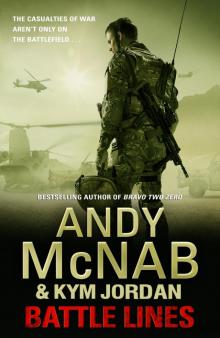 Battle Lines
Battle Lines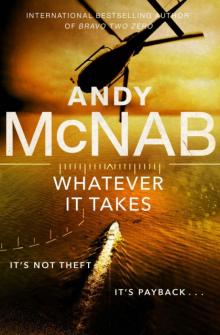 Whatever It Takes
Whatever It Takes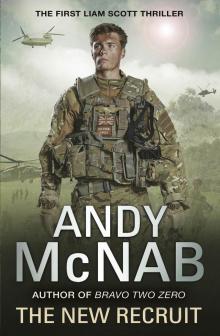 The New Recruit
The New Recruit War Torn
War Torn Brute Force
Brute Force Crossfire
Crossfire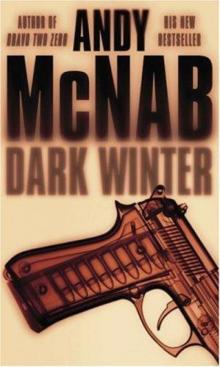 Dark Winter ns-6
Dark Winter ns-6 The Grey Man
The Grey Man Spoken from the Front
Spoken from the Front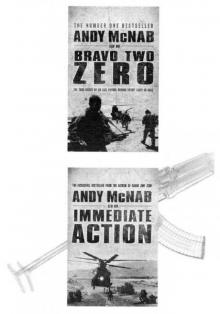 Meltdown
Meltdown Recoil
Recoil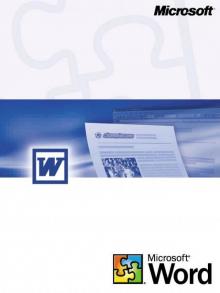 Nick Stone 1 - Remote Control.
Nick Stone 1 - Remote Control.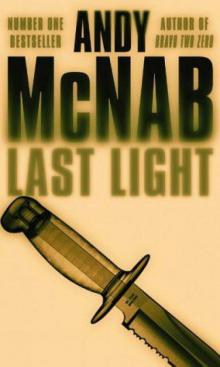 Last Light ns-4
Last Light ns-4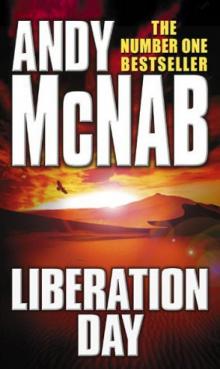 Liberation day
Liberation day Deep Black
Deep Black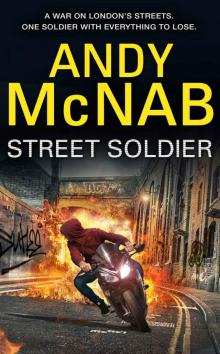 Street Soldier
Street Soldier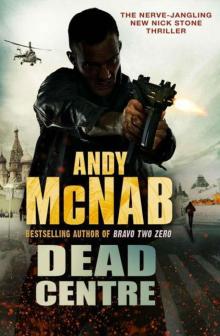 Dead Centre ns-14
Dead Centre ns-14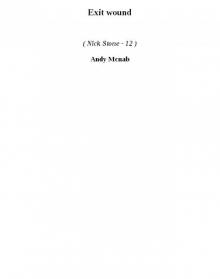 Exit wound ns-12
Exit wound ns-12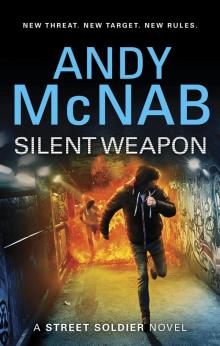 Silent Weapon
Silent Weapon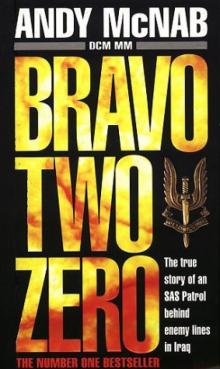 Bravo two zero
Bravo two zero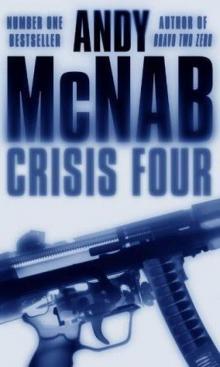 Crisis Four ns-2
Crisis Four ns-2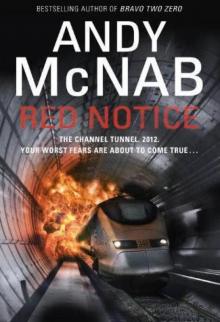 Red Notice
Red Notice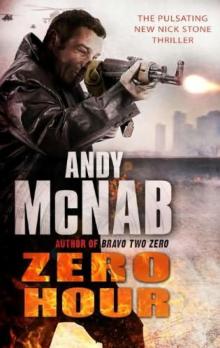 NS13 Zero Hour
NS13 Zero Hour Firewall
Firewall Last Light
Last Light Aggressor
Aggressor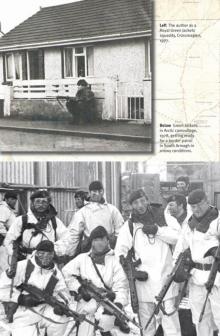 Seven Troop
Seven Troop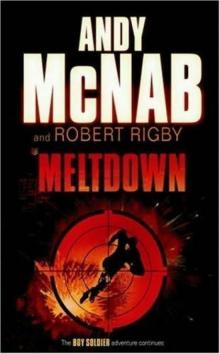 Meltdown bs-4
Meltdown bs-4 The Grey Man (quick reads)
The Grey Man (quick reads)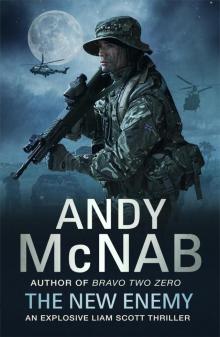 The New Enemy
The New Enemy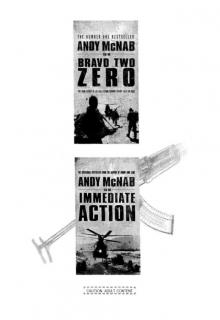 Avenger
Avenger FireWall ns-3
FireWall ns-3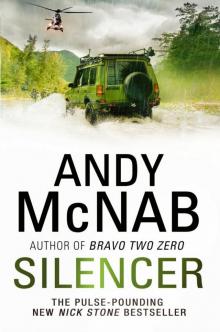 Silencer
Silencer Last Night-Another Soldier…
Last Night-Another Soldier…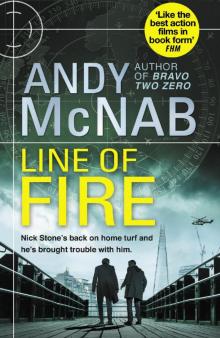 Line of Fire:
Line of Fire: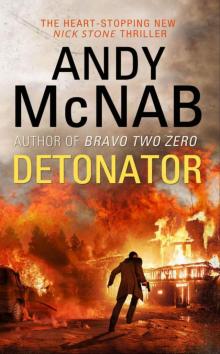 Detonator
Detonator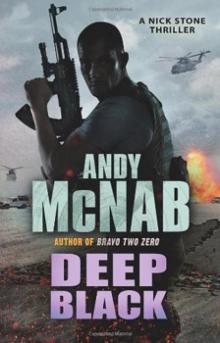 Deep Black ns-7
Deep Black ns-7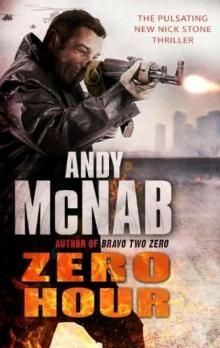 Zero Hour (2010) ns-13
Zero Hour (2010) ns-13 Brute Force ns-11
Brute Force ns-11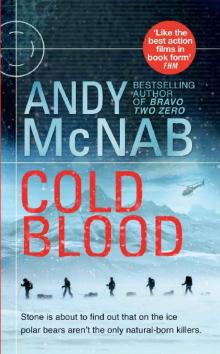 Cold Blood
Cold Blood Terminal Velocity
Terminal Velocity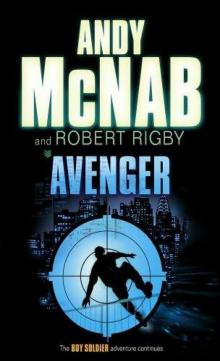 Avenger bs-3
Avenger bs-3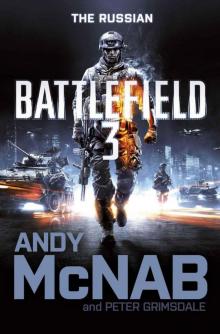 Battlefield 3: The Russian
Battlefield 3: The Russian DropZone
DropZone Zero Hour
Zero Hour NS13 Zero Hour (2010)
NS13 Zero Hour (2010)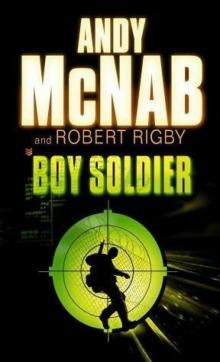 Boy soldier bs-1
Boy soldier bs-1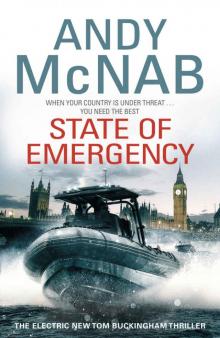 State Of Emergency: (Tom Buckingham Thriller 3)
State Of Emergency: (Tom Buckingham Thriller 3)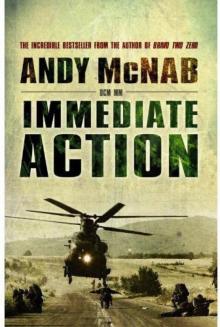 Immediate Action
Immediate Action The New Patrol
The New Patrol Crisis Four
Crisis Four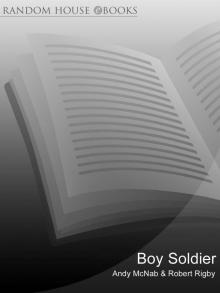 Boy Soldier
Boy Soldier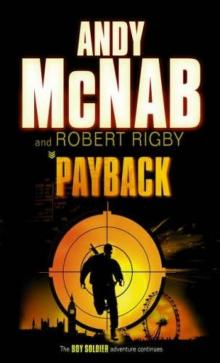 Payback bs-2
Payback bs-2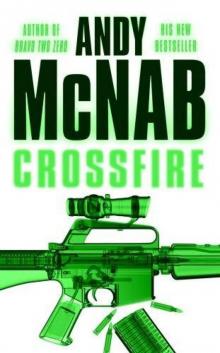 Crossfire ns-10
Crossfire ns-10 Today Everything Changes: Quick Read
Today Everything Changes: Quick Read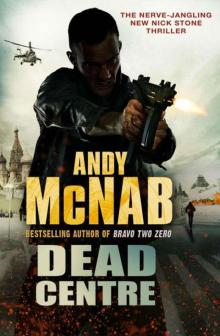 Dead Centre
Dead Centre For Valour
For Valour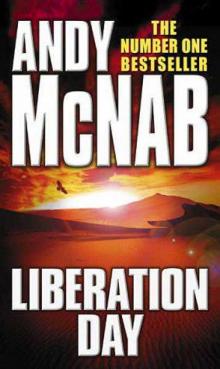 Liberation Day ns-5
Liberation Day ns-5 Aggressor ns-8
Aggressor ns-8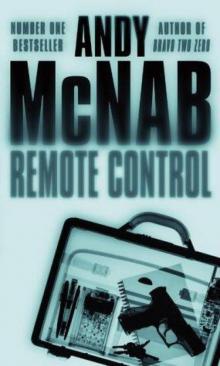 Remote Control ns-1
Remote Control ns-1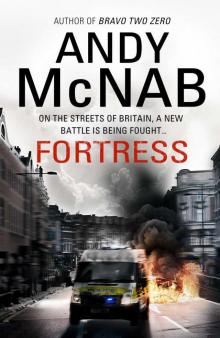 Fortress
Fortress On the Rock
On the Rock Dark Winter
Dark Winter